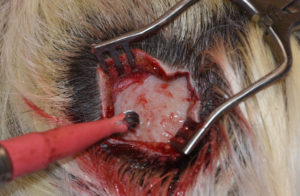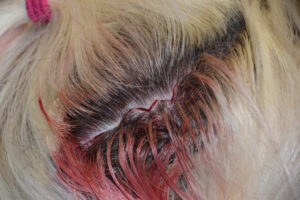The reduction of skull lumps and bump is a not uncommon request in skull reshaping surgery. Raised areas of the skull can occur for a variety of reasons although the most common is congenital, being just the way that the skull formed.
One unique type of skull lump is not really a lump at all. Known as the parietal eminence it develops from the parietal bone. This skull bone is situated on the sides and roof of the skull, is quadrilateral in shape and has four borders and four angles. Its external shape is convex and near its center is the parietal eminence from which it is formed by ossification. This ossification process begins about the eighth week in utero and gradually extends outward in a radial pattern from the eminence to the margins of the bone.
Because the parietal eminence is the epicenter of the parietal bone it can appear as a prominent bump. Roughly the size of a quarter it can discerned in oblique profile views and, even with hair, can be easily palpated.


Parietal eminence skull reduction is a very effective procedure that can be done with limited scalp and hair trauma that leaves an inconspicuous scar.
Dr. Barry Eppley
Indianapolis, Indiana


